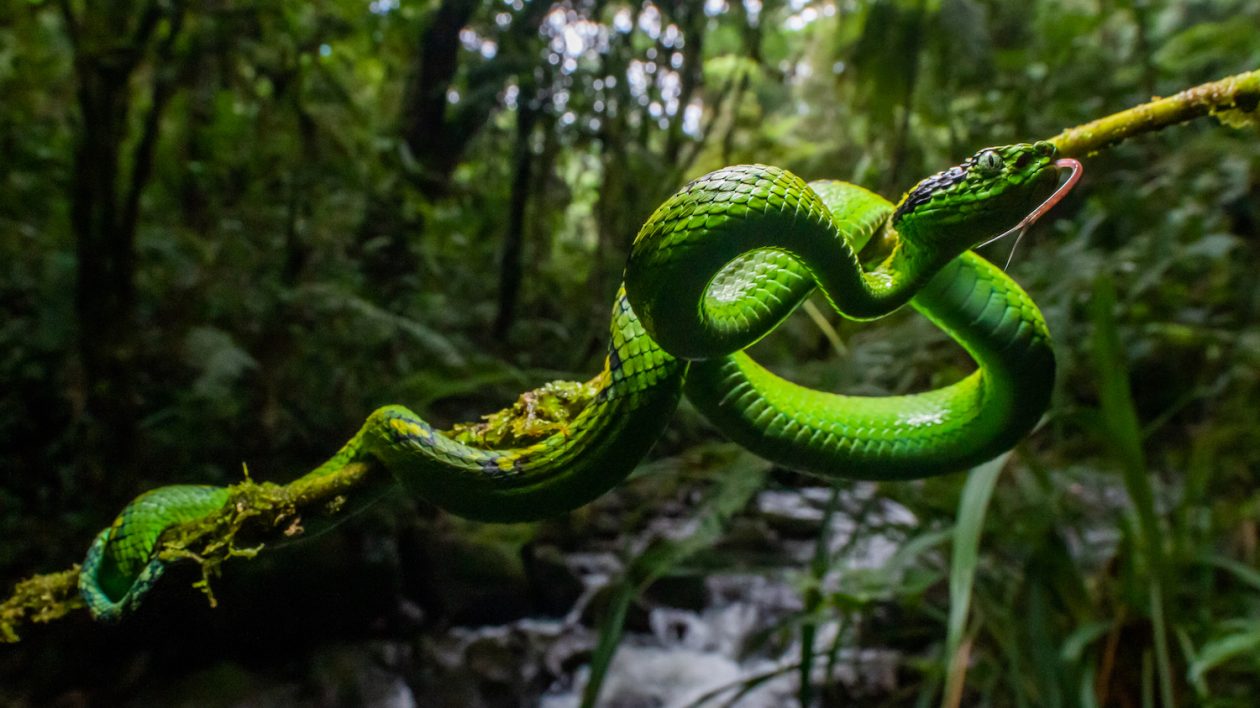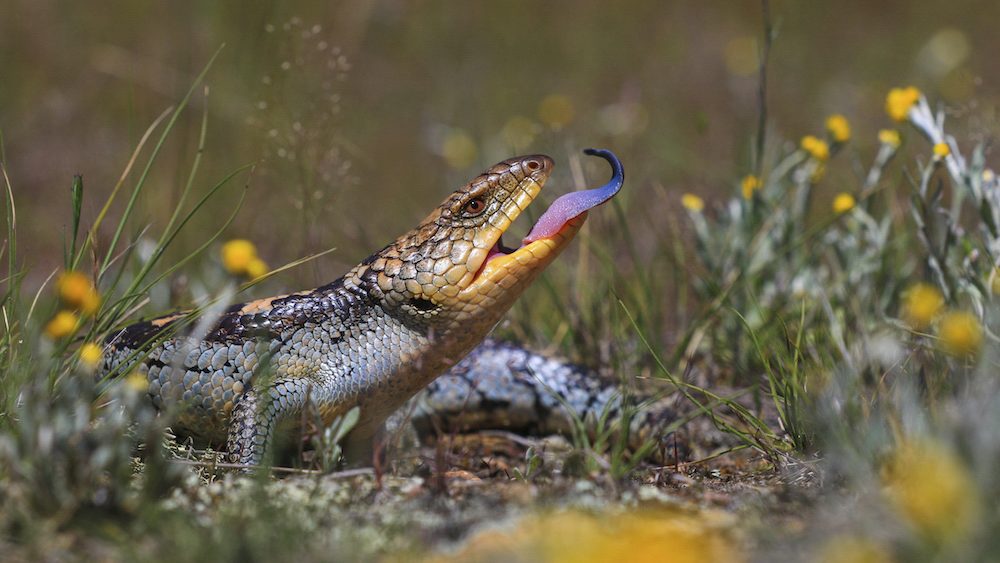The best herping happens at night. Yes, herping. It’s what herpers do. Herpers go crazy for what some may deem creepy. They shuffle along dark trails with cameras in hand and bucket lists on their mind. There’s often a dozen or so herpers herping together and they travel worldwide with great expectations. They’re hoping something goes bump, or jump, in the night.
“Whatever it is in the natural world that you get into, you get deeper and deeper into the lives of those animals,” says Mike Pingleton, field herper. “There’s always more to learn about how animals make a living on our planet.”
Herps is the collective term for amphibians and reptiles. Herpetology is the study of herps. Herpetologists are trained scientists who study herps. Herpers, also known as field herpers, are like birders but they log life lists for lizards instead. Herpers are not necessarily herpetologists, but many herpetologists are also herpers. Get it? Great. Let’s slither on.

Pingleton, a field herper, retired from a 30-year career of computer operations in 2019. He caught his first herp in a jar when he was 11. It was 1972, coffee cans were popular for collecting critters back then too. He took the herp to school and his science teacher told him it was a brown snake which lives on or underground eating earthworms.
His curiosity sprouted like any other kid’s. He caught an animal. Fifty years later, he doesn’t catch animals. As with any outdoor activity, there are ethical debates within the community. For instance, Cornell Wildlife Health Lab takes “no catch” farther by also frowning on flipping. That’s when you flip a rock or log, ripping off the roof of a house for whatever hides underneath. It’s a popular tactic among herpers but it can disturb critters and their habitat. And keeping your catch is now generally considered bad form. Sometimes herpers touch herps, but many now refrain from taking herps home, or to school.

“That’s the natural thing kids seem to do a lot,” Pingleton says. “But field herping as a recreational activity does not do that. You observe the animal and you may handle it, but you put it back right where you found it and you both move on. Animals have their right to their own existence so leave it where you found it and don’t interrupt what it’s doing.”
Pingleton is a premiere herp observer. As of March 1, 2022 he’s seen 1,285 different species. That includes the South American bushmaster (a snake) in Peru, but not the king cobra in Thailand. That’s still on his bucket list. He also produces a podcast called So Much Pingle, co-authored the Field Herping Guide in 2019 and he’s credited with nearly 11,000 observations since 2013 for the global citizen science database HerpMapper.
This spring, Pingleton is in Florida, on his way to the Everglades. By summer, he’ll be in Peru for the 11th time guiding other herpers. And usually there’s a jaunt to Asia seeking that king cobra, but not this year. This year, he’s going to Greece.

“I’m looking for vipers, wall lizards in the ruins and an interesting tortoise,” Pingleton says. “In Greece, there’s an opportunity to visit historic places and bag some herps while you’re at it.”
Bagging herps is beginner friendly. It’s basically a hike, but with specific purpose. You hike while looking for snakes and lizards plus toads and turtles if there’s water nearby. The hike doesn’t have to be remote. A Sunday stroll around the pond in your neighborhood park counts. There’s bound to be something wild hiding in manicured bushes to satisfy a pursuit that’s radically close to being a hobby.

“When I think of a hobby, I think of sitting inside stamp collecting or building model airplanes,” Pingleton says. “Most people who are engaged in field herping spend a lot of time traveling and a lot of time outside, but I guess it could be kind of a mega hobby.”
Like nearly every other outdoor pursuit during the pandemic, herping has blossomed in the last two years. The North American Field Herping Association Facebook group has 28,400 members. The Snake Identification Group, more than 100,000 members.
“A decade ago I said field herpers couldn’t fill a decent-sized ballpark, but we’re way past that now,” Pingleton says. “Herpers are pretty much anybody. Traveling to other countries is limited to people who have funds and time, but the herping community is across the spectrum of all ages and we’re starting to see more women and minorities, which is good. It’s an activity that is normalizing. ”





Good article, Kris. Reminds me of my senior year in college. Several classmates in my dorm (plus my wife, who was in a different dorm – this was a long time ago, remember) were taking Field Zoology. They were collecting local animal life, and salamanders were abundant. One afternoon I got back to the dorm and saw a dust bunny going down the hall. One of the captive salamanders escaped from its box under the bed and was on the run.
I’ll note that dust bunnies were not considered local wildlife.
Herps, like birds, mammals, and invertebrates, are stressed enough just trying to survive. Touching them is unethical. Let them live their lives without disturbance.